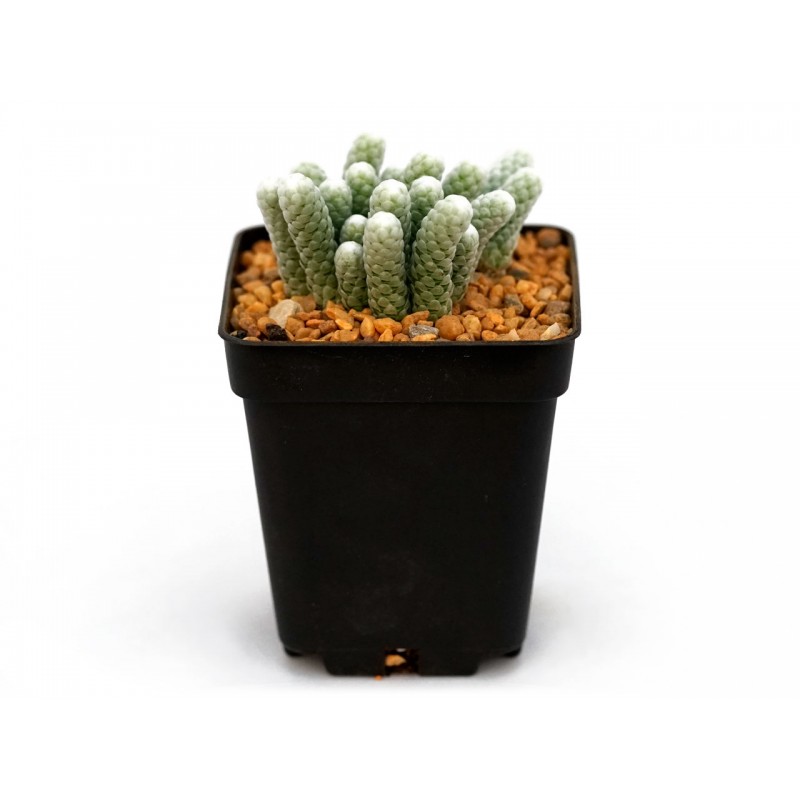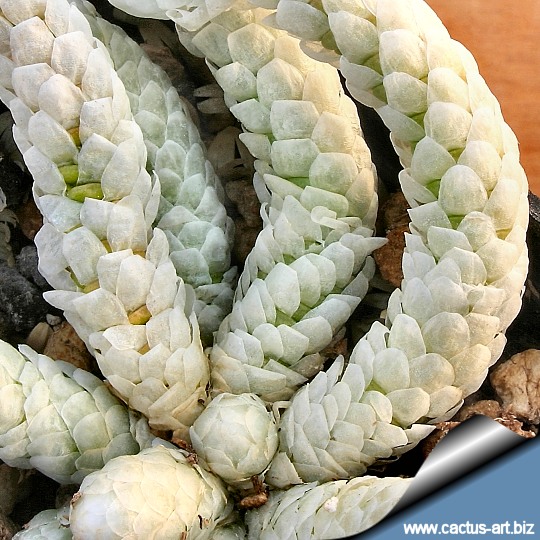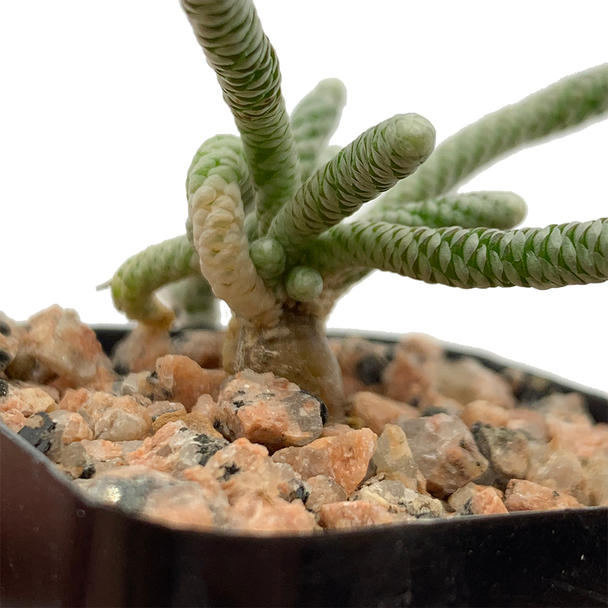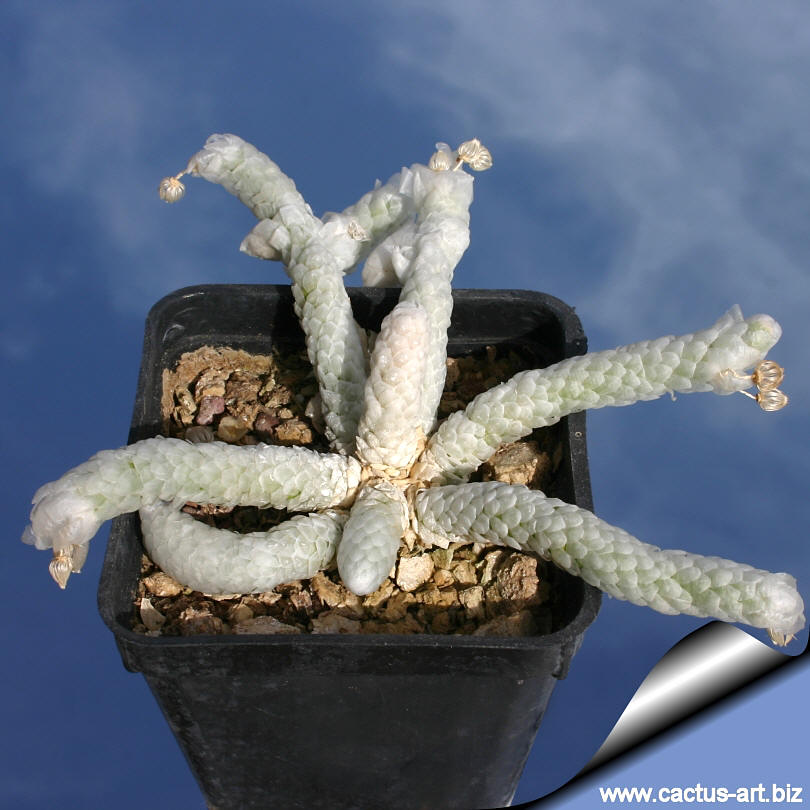Avonia papyracea namaensis Cactus Y Suculentas, Agave, Air Plants, Succulents, Gardening, Cactus

avonia papyracea Succulents Garden, Blackberry, Fruit, Indoor, Succulents, Plants, Eyes
Description Avonia papyracea, formerly known as Anacampseros papyracea, is a dwarf succulent with several slender branches that radiate from a tapered rootstock or basal caudex, wholly clothed in white papery overlapping stipules that are bigger than leaves and hide them.

Avonia papyracea subs. namaensis
Anacampseros papyracea is a species of succulent plant in the family Anacampserotaceae. It is endemic to Southern Africa. [1] Taxonomy Anacampseros papyracea contains the following subspecies: Anacampseros papyracea subsp. papyracea Anacampseros papyracea subsp. namaensis Gerbaulet Anacampseros papyracea subsp. perplexa (G.Will.) Dreher

Avonia papyracea namaensis Cactus Y Suculentas, Agave, Air Plants, Succulents, Gardening, Cactus
The two subspecies are: Avonia papyracea subsp. namaensis, G.D. Rowley and Avonia papyracea subsp. papyracea, G.D. Rowley 1994. At present, I haven't figured out the difference. This bright white scales; stipules, reflect the sunlight, protecting the plant in its harsh environment.

Avonia papyracea subs. namaensis Suculentas, Cactus y suculentas, Jardin botanico
The name 'papyracea' refers to the striking stipules of the succulent plant. These have a paper-like structure, which is what gives Avonia papyracea ssp. namaensis its striking appearance. These stipules protect the plant from the sun and make it appear to look like bird droppings due to the white color. This sounds unappealing, but up close.

Avonia Papyracea Carnosa & Spinosa
Sun Exposure: Light shade to full sun. High levels of light are needed to flower and for good plant development. Clustering in cultivation, if grown correctly, it will reward the grower with generous displays of tiny flowers. Reproduction: Seed that germinate at 15-21 °C

Avonia papyracea Plantasvillor
Avonia papyracea (E.Mey. ex Fenzl) G.D.Rowley: It is a tiny plant plant with small flexible branches covered with pure white overlapping, smoothly rounded scales. South African endemic, Little Karoo and Great Karoo (Eastern Cape). Avonia papyracea subs. namaensis (Gerbaulet) G.D.Rowley: is the largest and stoutest of the Avonia group.

Avonia papyracea ssp. namaensis
Avonia papyracea subsp. namaensis Category: Unknown - Tell us Water Requirements: Unknown - Tell us Sun Exposure: Unknown - Tell us Foliage: Unknown - Tell us Foliage Color: Unknown - Tell us Height: Unknown - Tell us Spacing: Unknown - Tell us Hardiness: Unknown - Tell us Where to Grow: Unknown - Tell us Danger: Unknown - Tell us Bloom Color:

AVONIA PAPYRACEA SSP NAMAENSIS Cactus, Fiori rari, Piante
Avonia papyracea is a South African endemic. The typical Avonia papyracea are present in the Little Karoo and Great Karoo (Eastern Cape). Subsp. namaensis occurs in the Richtersveld, southern Namibia and Bushmanland. Avonia papyracea grows in full sun among quartz rocks. The unique white scales reflect much of the light and act as sun-shades over the tiny leaves beneath. Caring for avonia 1.

Avonia papyracea
Anacampseros papyracea subsp. namaensis Gerbaulet Provided by: [A].Anacampserotaceae; Synonyms Avonia papyracea (E.Mey. ex Fenzl) G.D.Rowley Provided by: [A].Anacampserotaceae Bibliography 1 Eduard Fenzl (1808-1879) 2 Ernst Heinrich.

Avonia papyracea subs. namaensis
Avonia Papyracea. 11 €. Avonia Papyracea is a unique-looking succulent that grows lots of branching, erect or creeping stems covered in scales and look somewhat like dreadlocks! This plant is a rarely-offered, yet easygoing houseplant that will make a great addition to your collection. OUT OF STOCK.

Avonia papyracea subsp. namaensis
Avonia papyracea subsp. namaensis needs 0.8 cups of water every 12 days when it doesn't get direct sunlight and is potted in a 5.0" pot. Use our water calculator to personalize watering recommendations to your environment or download Greg for more advanced recommendations for all of your plants. Water 0.8 cups every 12 days

Avonia papyracea ssp. namaensis
Grower's Tips Avonia s grow very slowly and require careful cultivation. However, if grown correctly, they cluster and reward the grower with generous displays of tiny flowers. Avonia s grow well at moderate to cooler temperatures in partial sun. Bright light enhances leaf colors and makes a compact plant.

Avonia papyracea
Basic Info Avonia Papyracea is best known to be a beautiful looking succulent. As the plant matures expect it to streach out in all direection with the beautiful green-blue looking succulents. When the plant produces flowers expect them to be white. This succulent is ideal for growers who want unusual shapes in their home. Scientific Classification

avonia papyracea Google Search в 2020 г
- Avonia papyracea (2010) By Chris Deem (July 2010) It is always quiet here. There are no trees, there are no shrubs. Each morning at dawn the sky caresses the stones. The sunrise this day, like the beginning of many other mornings, cast a soft pastel brightness of blue amd pink over the cool, quartz-rich gravel.

Araflora, exotic flora & more Avonia papyracea ssp namaensis
Succulent Avonia papyracea namaensis is a native of South Africa and Namibia. It is the largest known Avonia belonging to the Portulacaceae family. The plant consists of a mass of miniature stems that either branch as creepers or grow erect. These stems do not grow more than 5 to 10 cm in height.

Avonia papyracea namaensis Desert
This mesmerizing succulent native to Southern Africa has captured the hearts of plant enthusiasts with its delicate, translucent leaves and captivating color variations. This article will explore the fascinating characteristics, cultivation tips, and reasons why Avonia Papyracea has become a beloved addition to succulent collections.